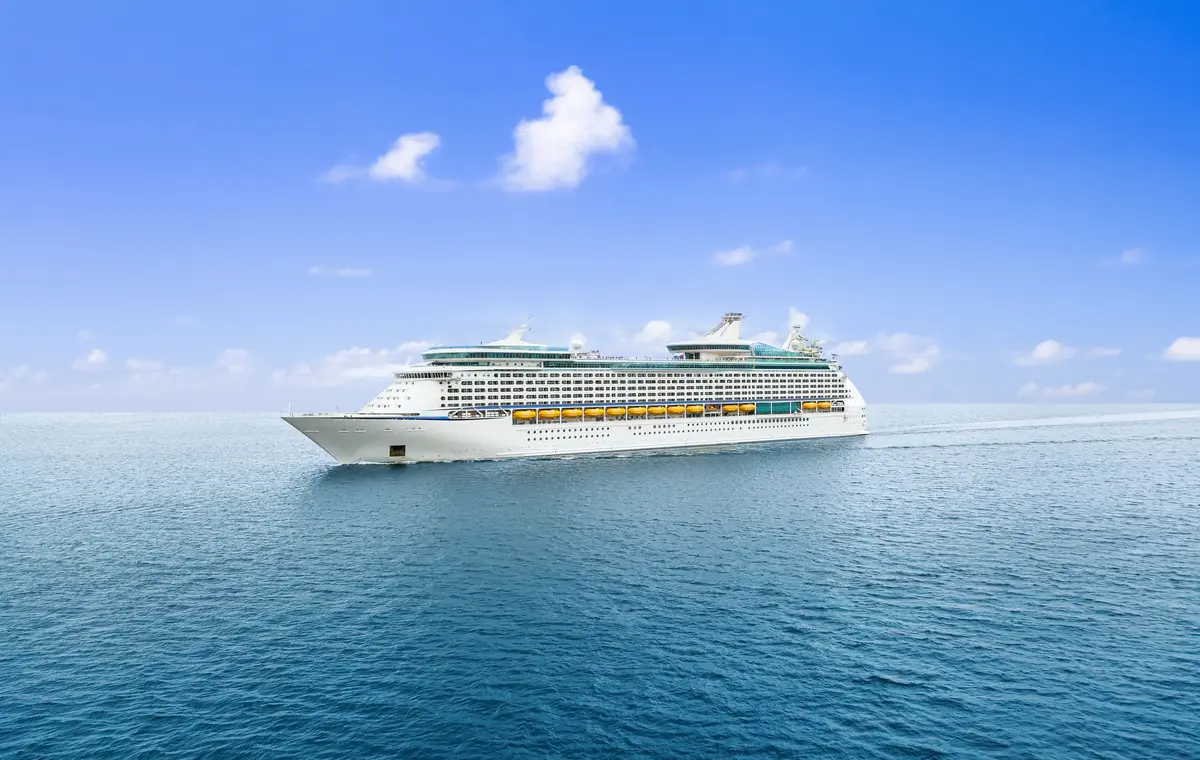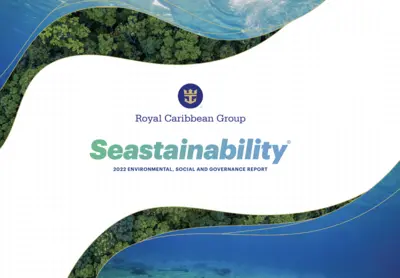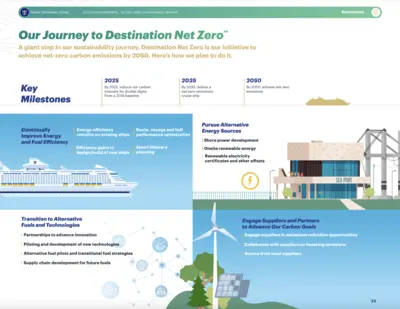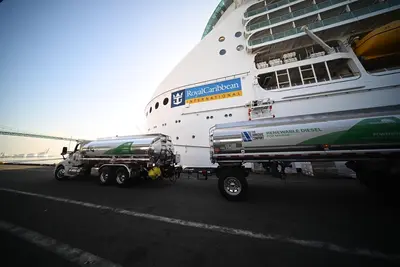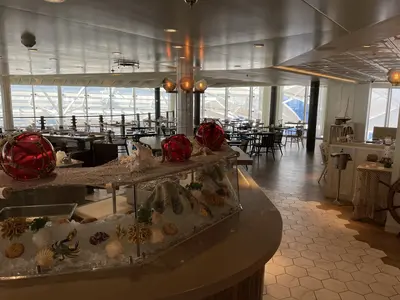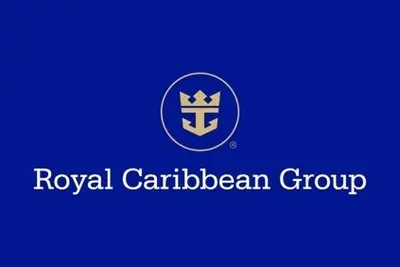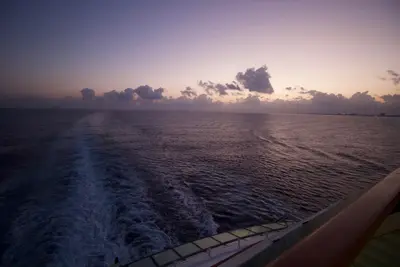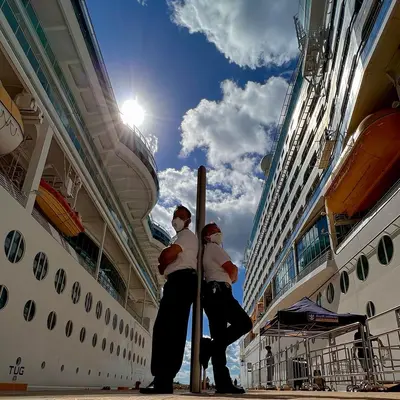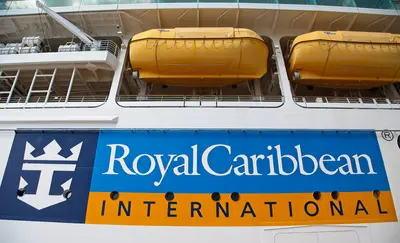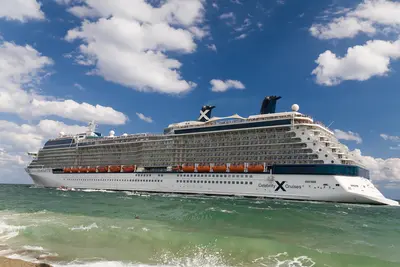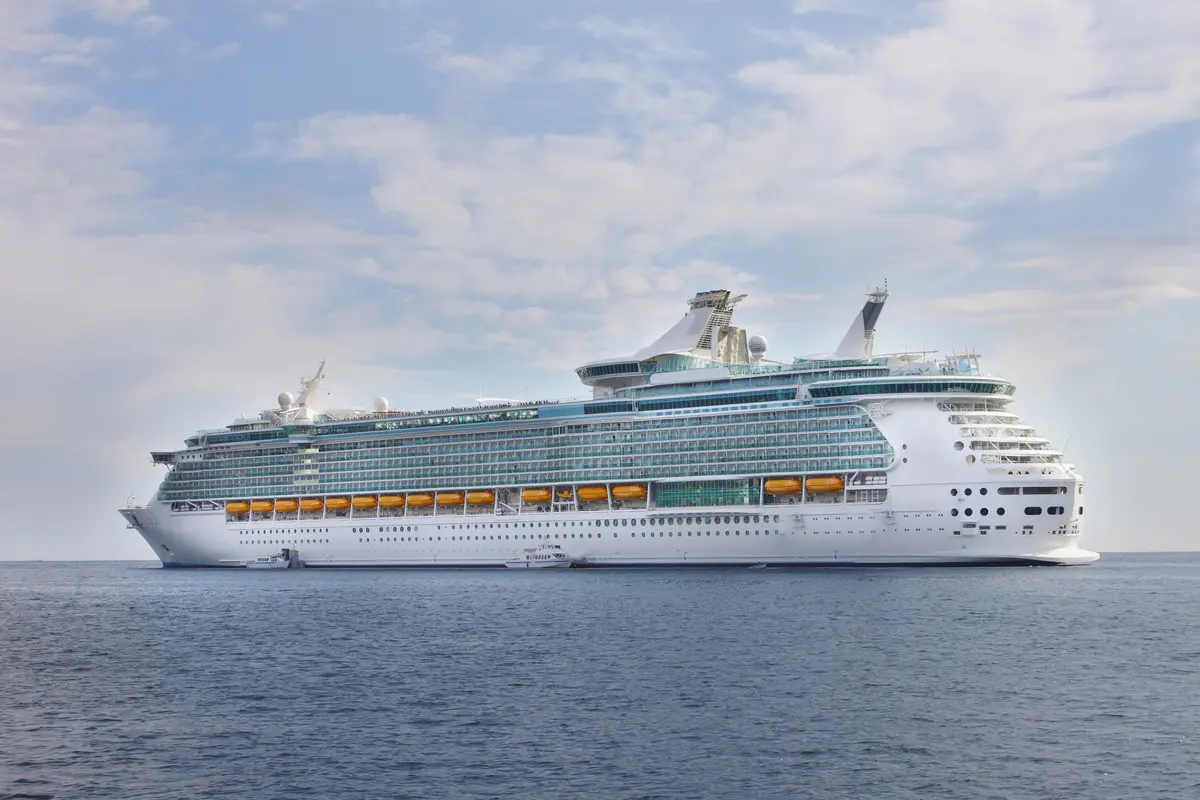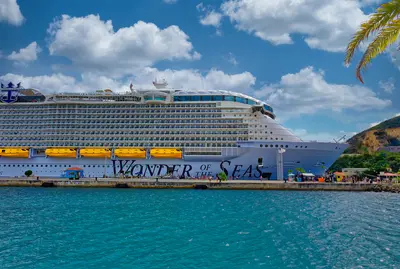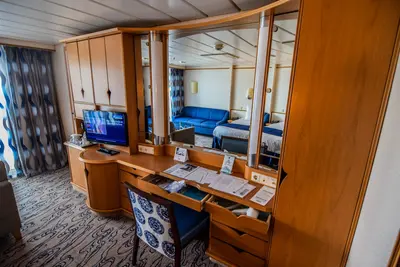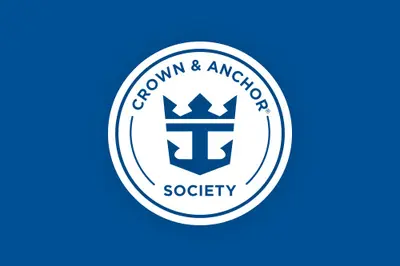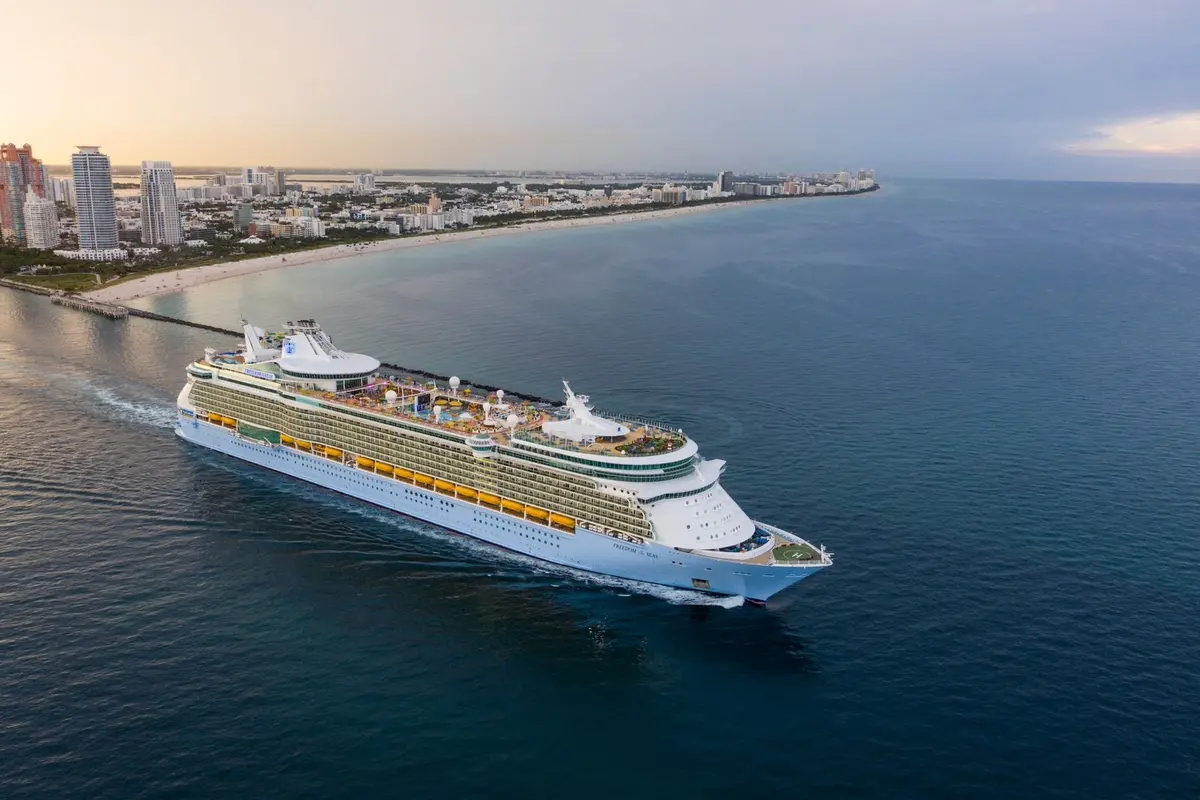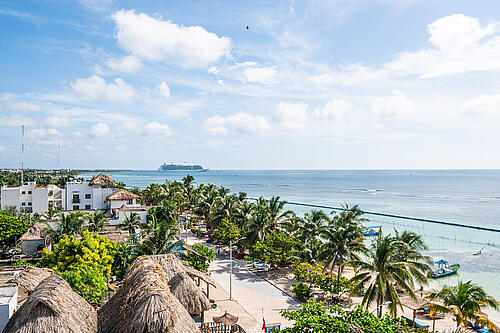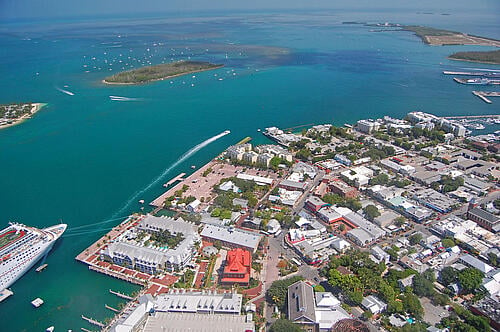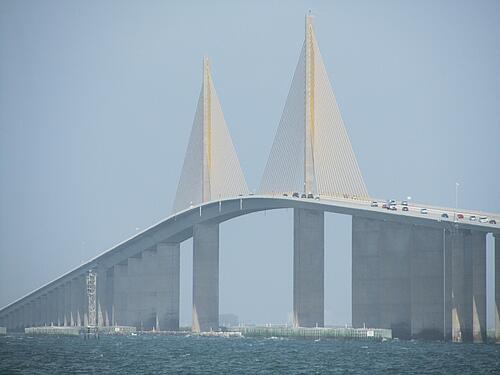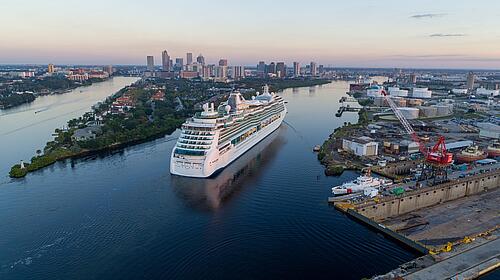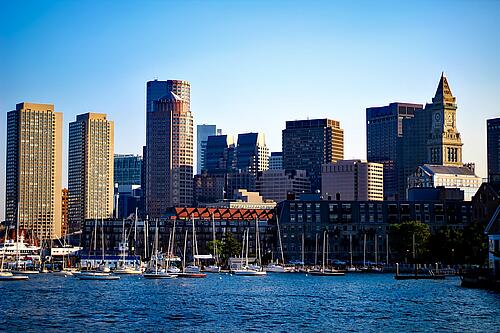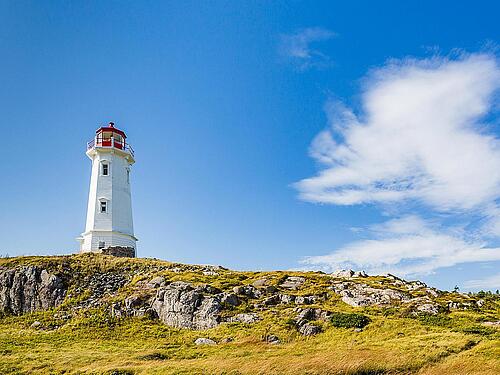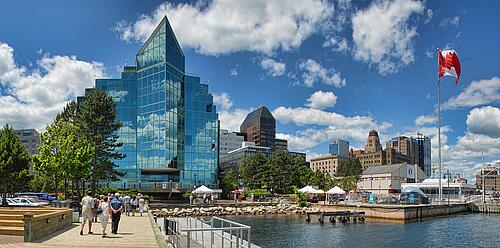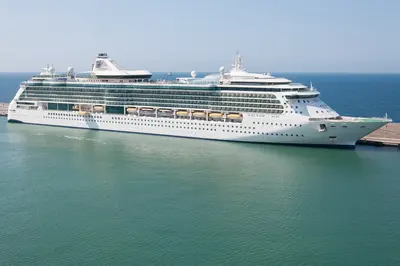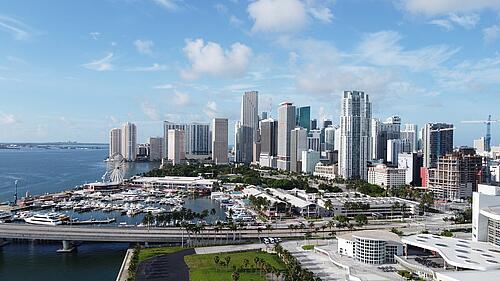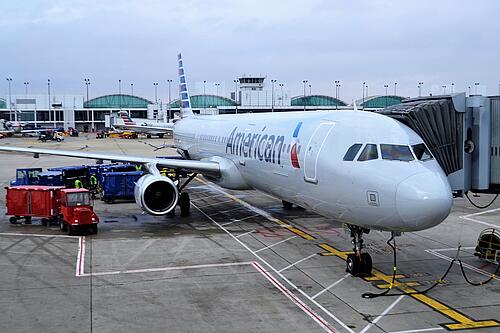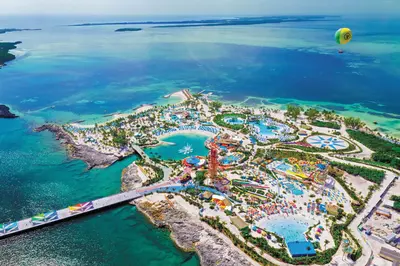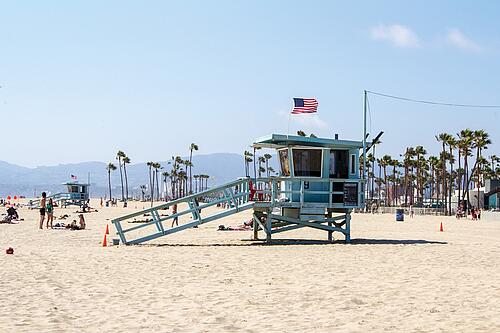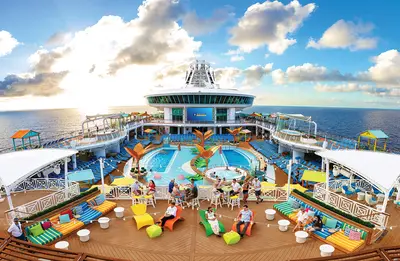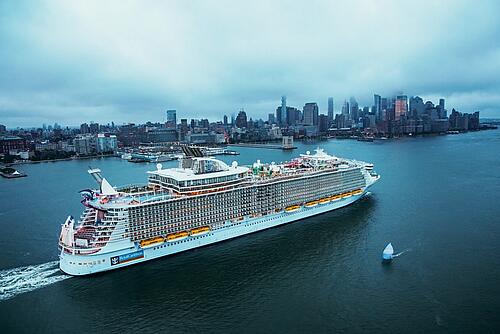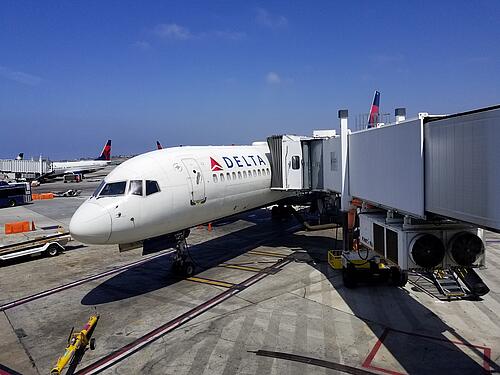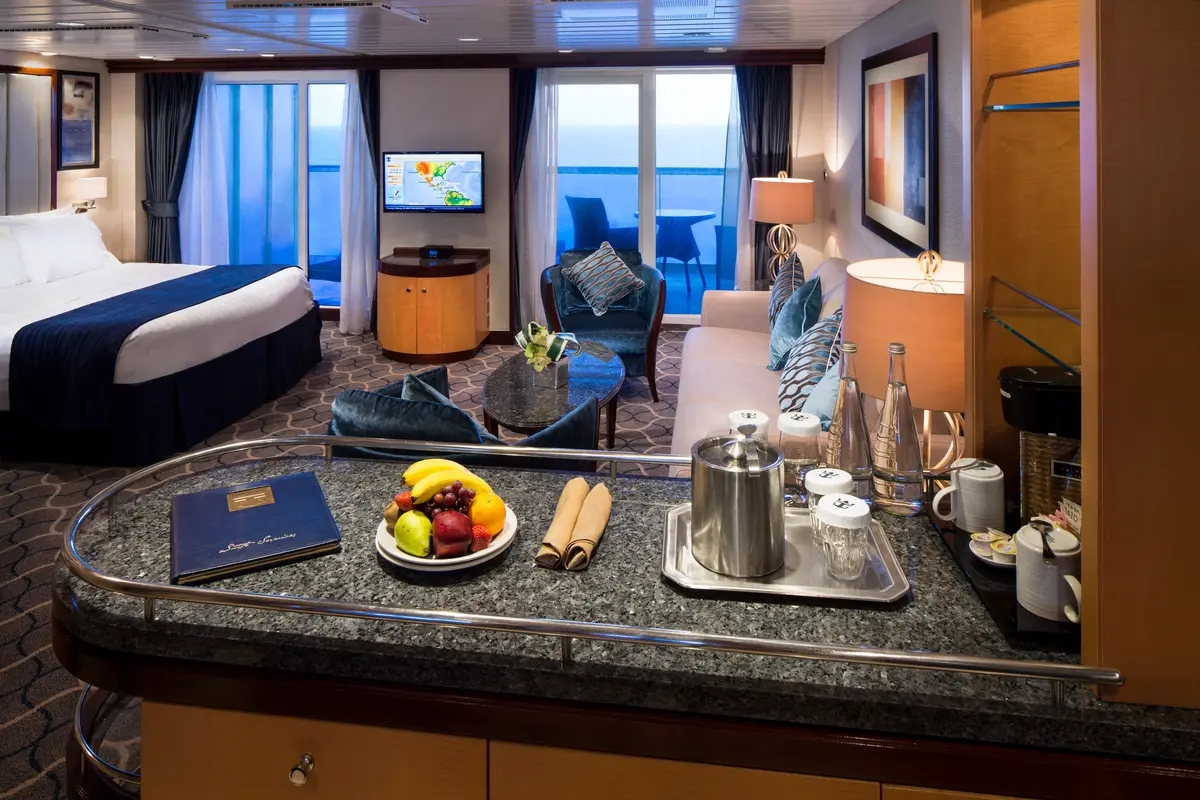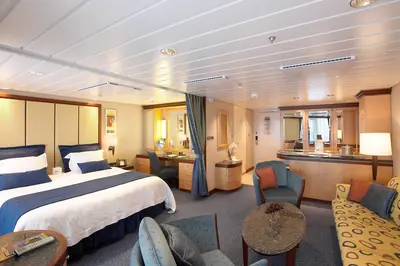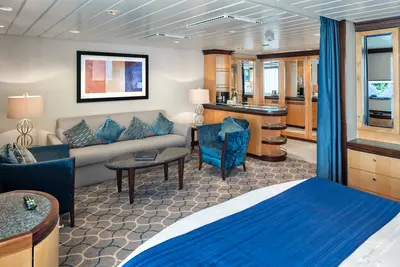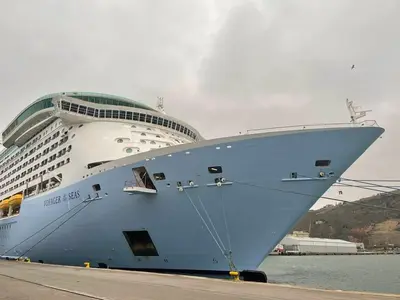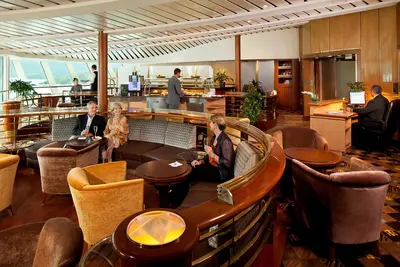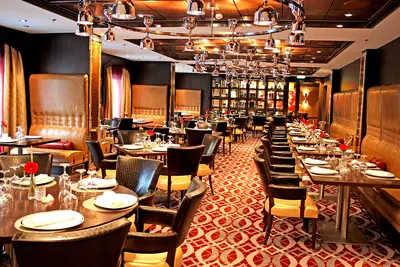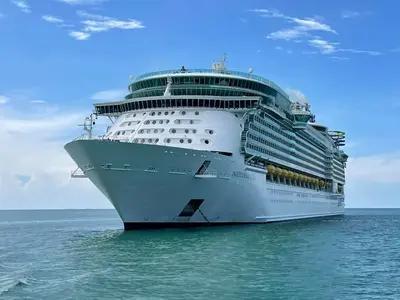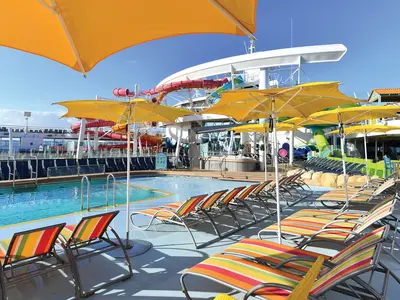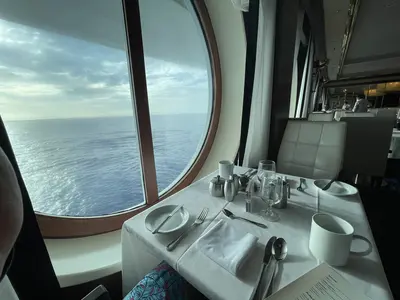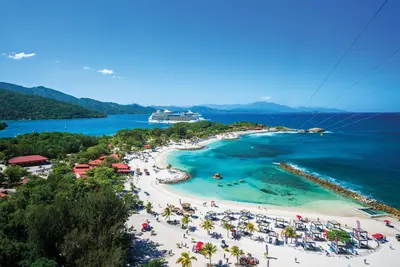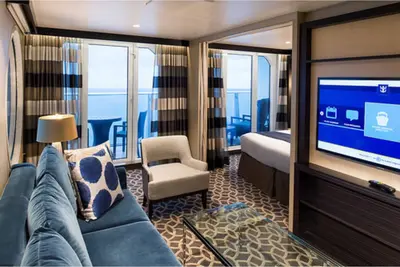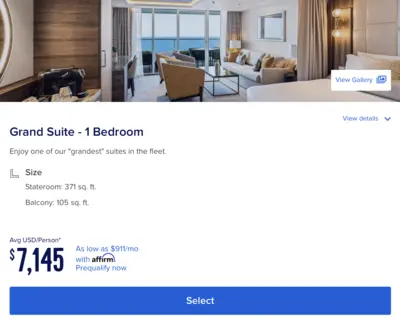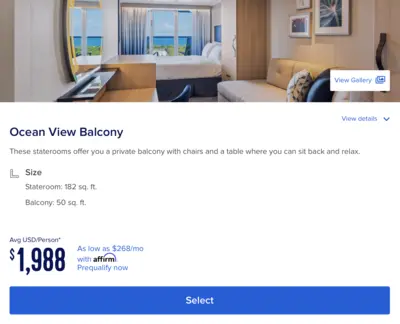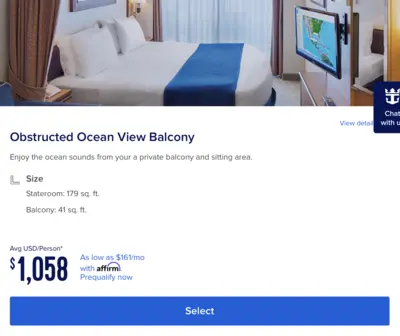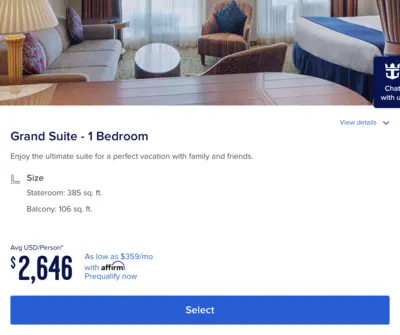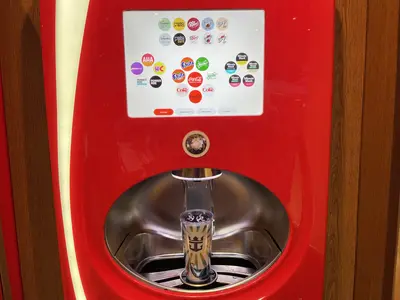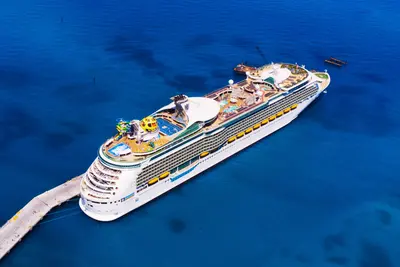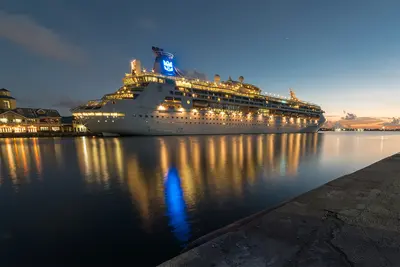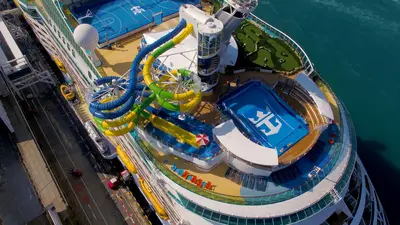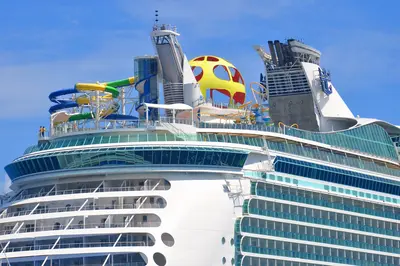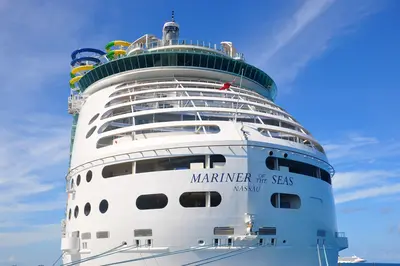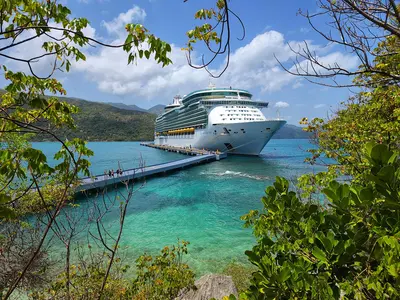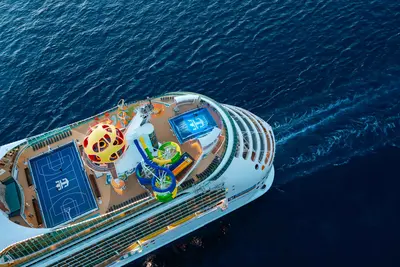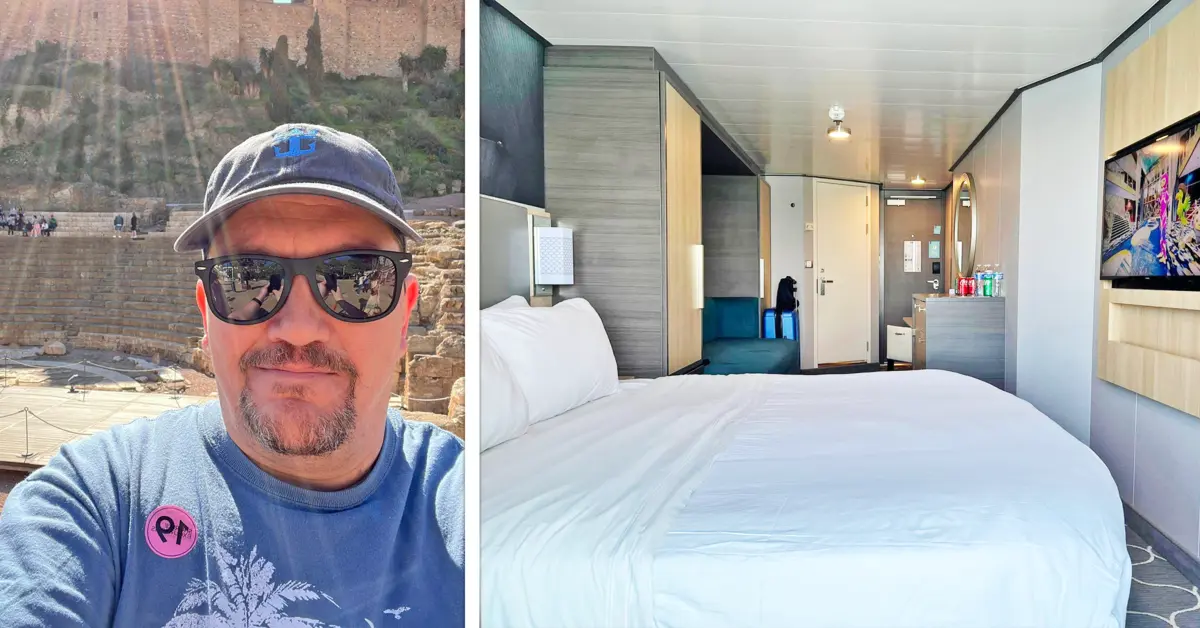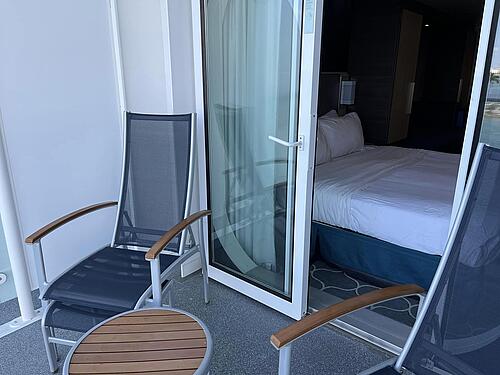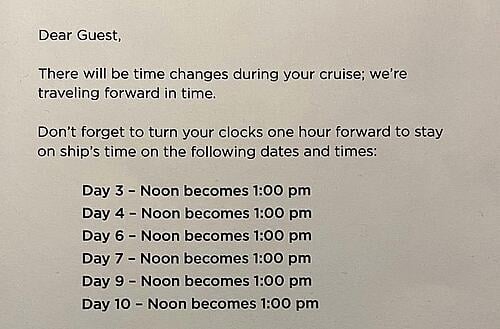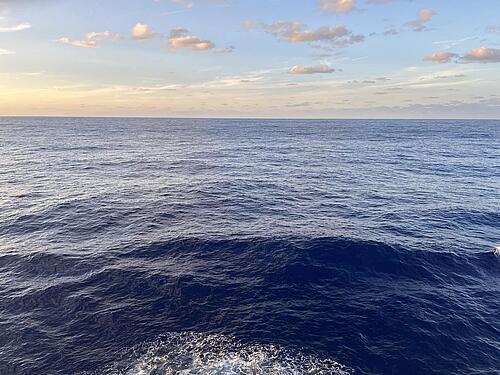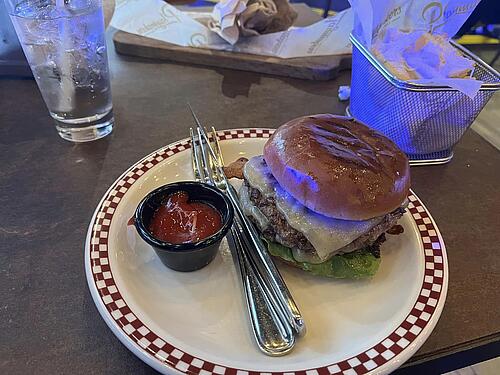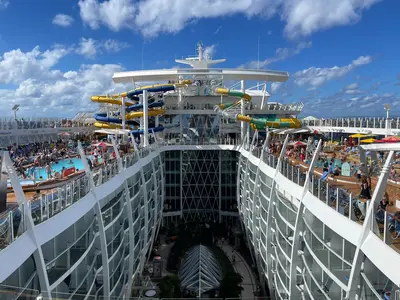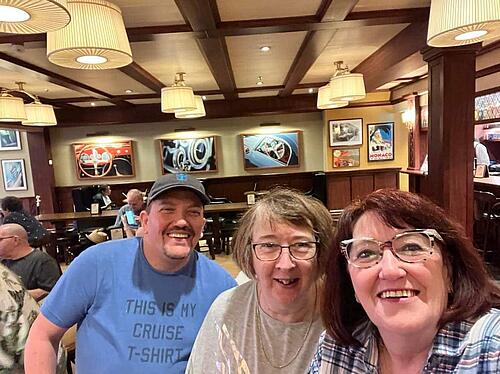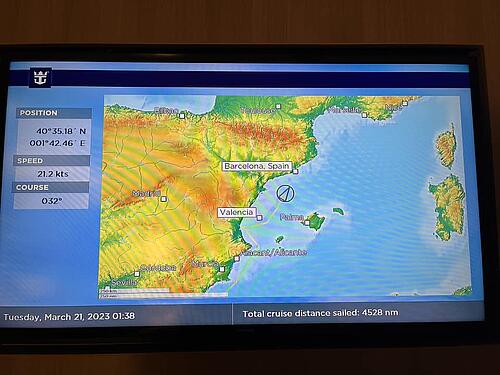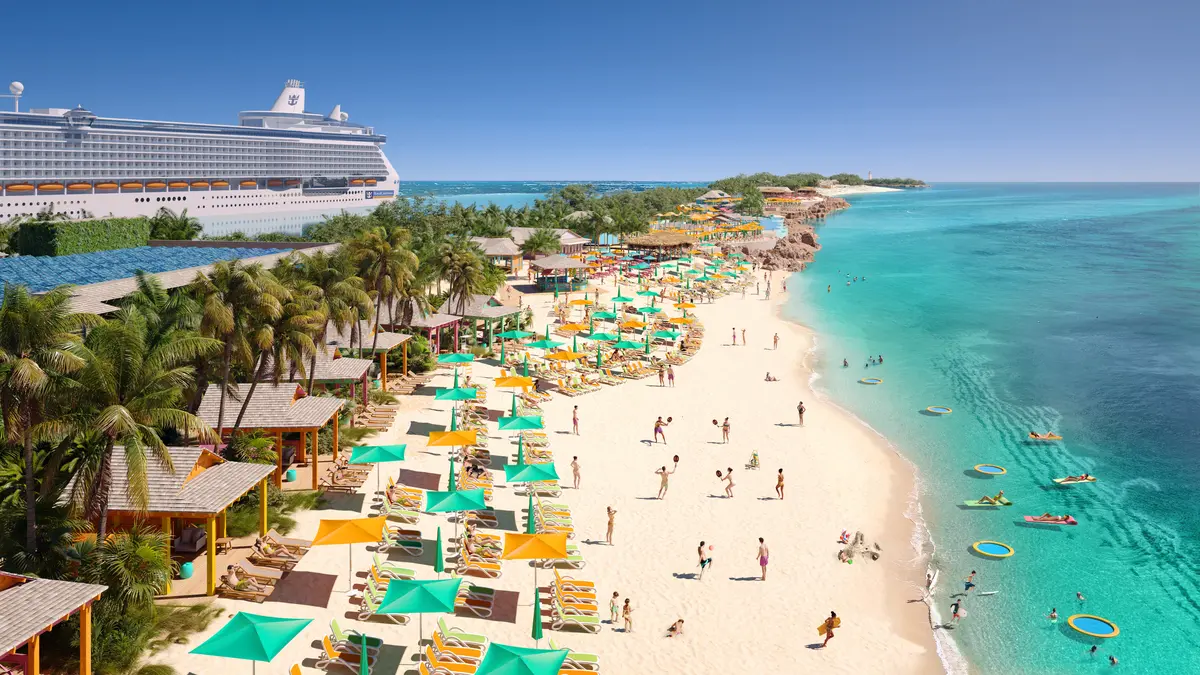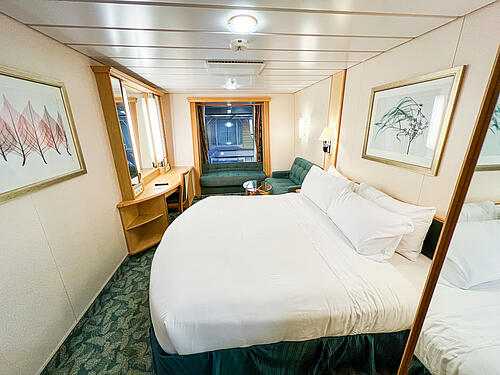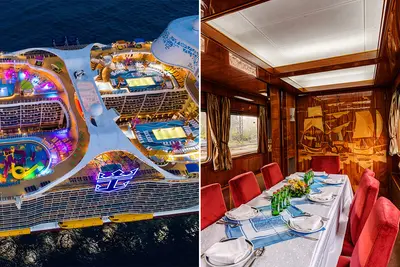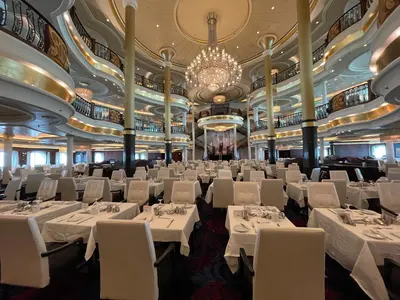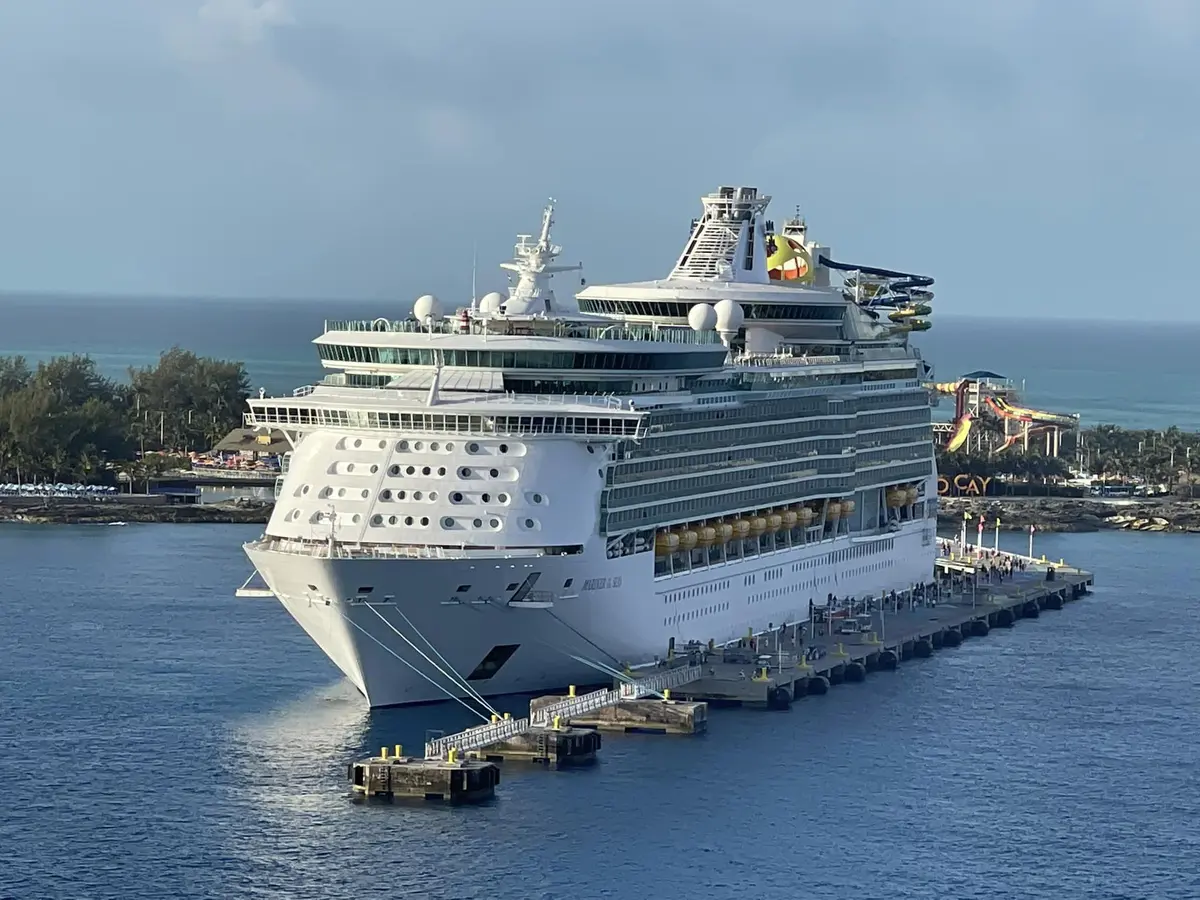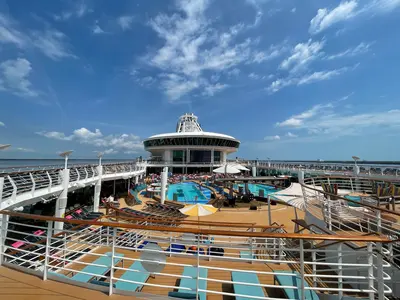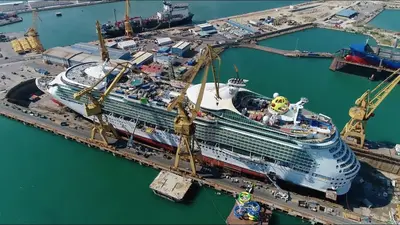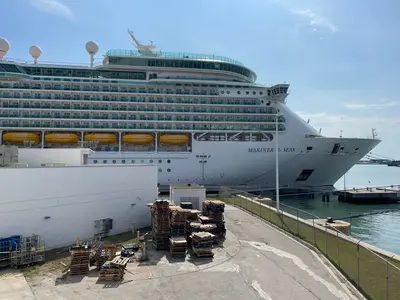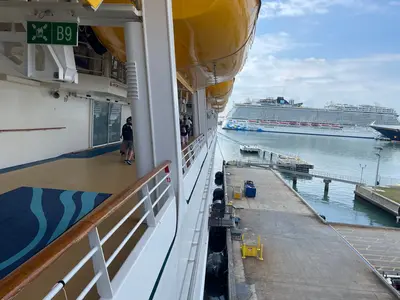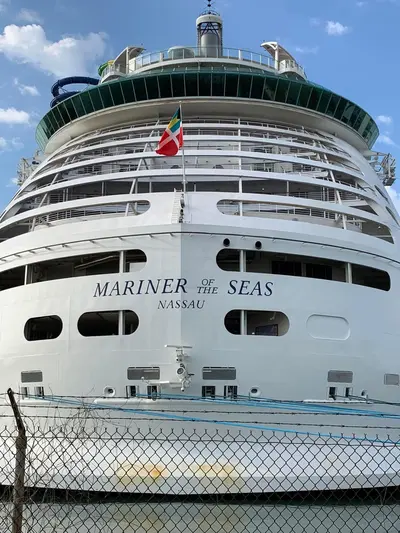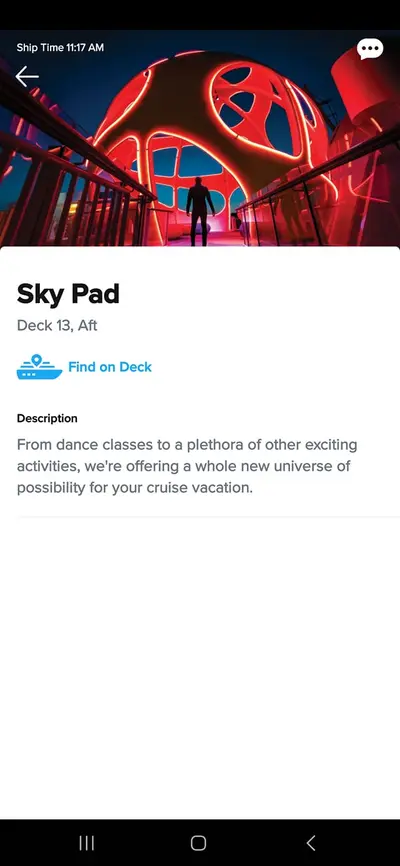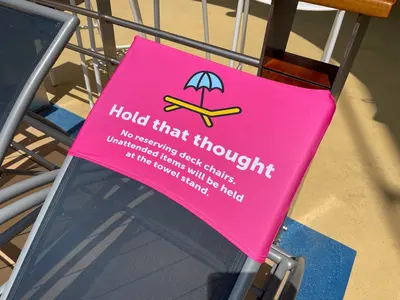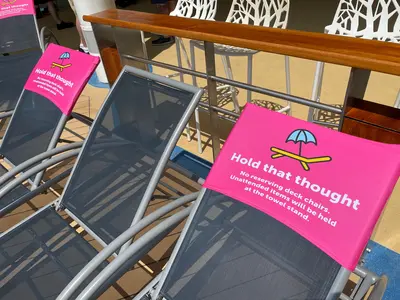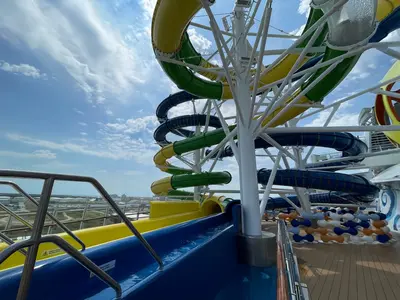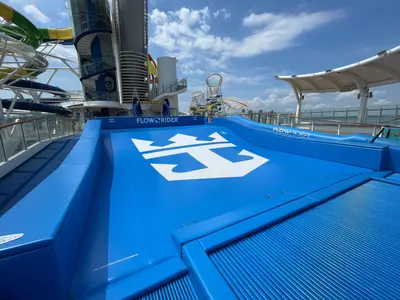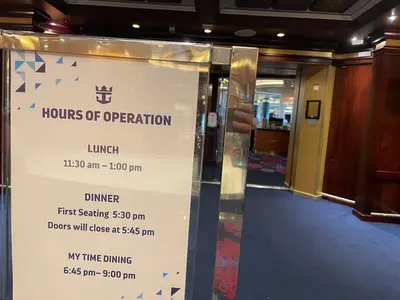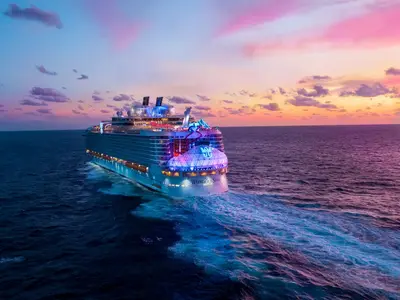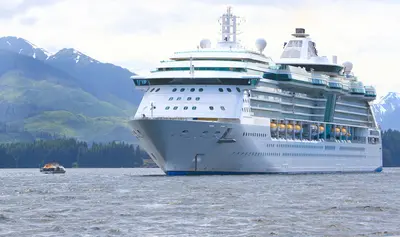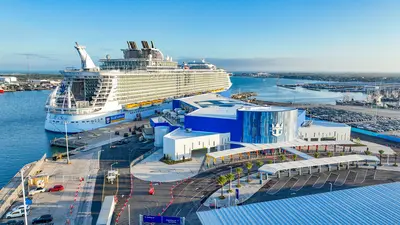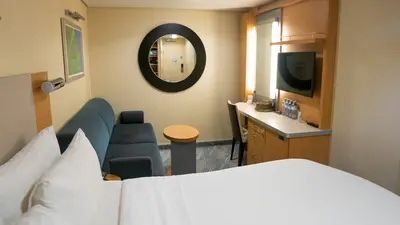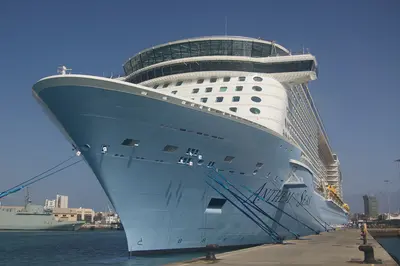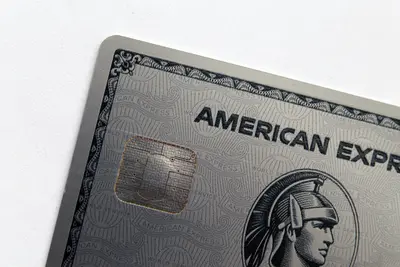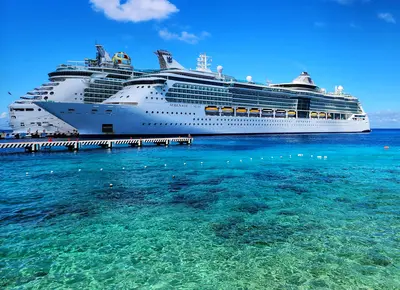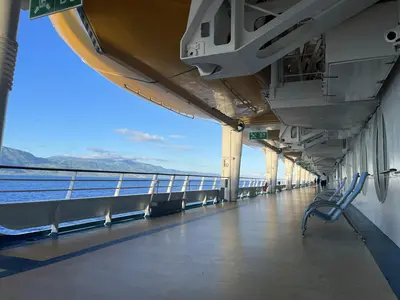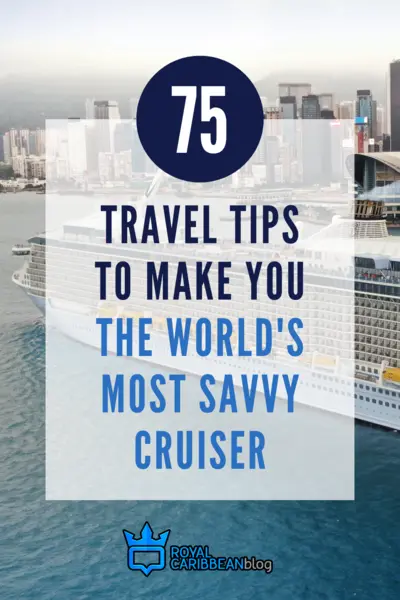First-time cruisers make the same mistakes over and over again, and we’re here to help you avoid them.
It’s understandable to make mistakes when planning a Royal Caribbean cruise. Although planning a cruise may seem simple at first glance, there’s more planning involved than you might initially think. From booking the right ship to packing and planning shore excursions, there’s a lot to remember when preparing for a cruise vacation.
No one is a professional cruiser off the bat, but over time the cruise process becomes second nature. The Royal Caribbean Blog staff has collectively taken hundreds of cruises, and we’re sharing our best tips for booking, planning, and enjoying a Royal Caribbean cruise.
Here are 75 of our best cruise tips to make you the world’s most savvy cruiser.
Booking a Cruise Tips
1. Book with a travel agent
Yes, travel agents still exist, and they are an invaluable resource when planning a cruise vacation.
We always recommend booking a cruise with a travel agent. Not only will they save you time, but they could potentially save you money as well! Travel agents are available to answer any questions you may have before, during, and after your cruise, and a good travel agent will cost you nothing extra.
Related: Top 5 things to look for in a good travel agent for your cruise vacation
2. Purchase travel insurance before your cruise
It’s always better to have travel insurance when you need it rather than not have travel insurance when you want it.
Before a Royal Caribbean cruise, make sure to purchase travel insurance. Travel insurance can protect your trip in case of any unexpected delays as well as provide coverage in medical emergencies.
Related: Should you buy annual travel insurance plans?
If you cruise or travel frequently, you may want to consider purchasing an annual plan. The price of an annual plan can pay off after just a few trips, making it a great investment for frequent travelers.
3. Expand your itinerary choices
It’s easy to fall into the routine of sailing to the same cruise ports over and over. If you're a frequent cruiser that lives in Florida, you’ve probably cruised to Nassau, Cozumel, and St. Thomas more times than you can count.
Instead of traveling to the same ports time and time again, consider branching out in your cruise itineraries. Instead of a Caribbean cruise, look for itineraries to Alaska or Europe. If you live on the west coast, try a cruise from Los Angeles instead of flying to Florida.
You may just find a new favorite cruise port by trying new, exciting itineraries.
4. Sailing on an older ship is almost always cheaper
Most of the best deals you can find on a cruise are on older ships. The latest and greatest Royal Caribbean ships are usually priced several hundred dollars more per person, per cabin.
If you’re looking to snag a great cruise deal, consider sailing on a Vision, Radiance, or Voyager Class cruise ship. Before booking an older cruise ship, though, remember to research the ship’s amenities, cabins, and activities.
Related: Pros and cons of sailing on an older Royal Caribbean cruise ship
Booking a 20+ year old cruise ship to save money could lead to disappointment later on if you expect activities like waterslides, Broadway shows, and zip lines onboard.
5. Book your cruise far in advance…
The cheapest cruise fares are usually found on recently released itineraries. Royal Caribbean releases new itineraries around two seasons before the sail date, and this is when you can find some of the best deals.
If you can plan cruises far in advance, you have the potential to save hundreds (or even thousands) of dollars.
6. Or, look for last-minute cruise deals
Although you’ll usually find the best cruise deals when booking far in advance, you can occasionally come across fantastic last-minute deals that can save you money.
Most last-minute cruise deals pop up after a sailing’s final payment date—75 or 90 days before the cruise begins. If the sailing has a significant amount of cabins yet to be booked, the cruise line will lower prices to attract higher demand.
Flexibility is key when searching for last-minute cruise deals, though, as you can never predict the ship, itinerary, and embarkation port of the cheapest last-minute deal.
Related: Ultimate Guide to last-minute cruise deals
7. Cruise during the off-season to save money
Cruises in the peak season—which varies by destination—will be more expensive than those during the off-season. If your schedule is flexible, booking during the off-season or shoulder season can save you money.
Peak season in Alaska, for example, runs from mid-June to mid-August, and this is when cruise fares are highest. During shoulder season in May and September, however, you can see sailings priced hundreds of dollars cheaper per person.
That being said, a destination’s off-season is typically the off-season for a reason, whether it's during the middle of hurricane season or during a month prone to colder temperatures.
8. Book a guarantee stateroom
If you want to save money while booking your cruise, choose a guarantee cabin. Booking a guarantee cabin is when you don’t select the exact location of your stateroom. Instead, Royal Caribbean assigns you a stateroom location based on availability closer to sailing.
Related: I saved $100 by letting Royal Caribbean choose my cruise ship cabin location, and I would let them do it again
If you’re flexible with cabin location, booking a guarantee stateroom can save hundreds of dollars.
9. Reprice your cruise before final payment date
Residents of most countries, including the United States, can reprice a Royal Caribbean cruise until final payment date. This means that if you booked a cruise a year in advance and see that the price has dropped a few months before your cruise, you can pay the new, lower price.
Repricing your cruise has the potential to save you hundreds (or perhaps even thousands) of dollars. You can look for price drops by searching Royal Caribbean’s website or by asking your travel agent to periodically check for lower prices.
10. Prepay gratuities before you set sail
Gratuities are service charges that are split amongst crew members on a Royal Caribbean cruise. At the time of writing, gratuities cost $16 per person, per day for guests in standard cabins and $18.50 per person, per day for those in Grand Suites and above.
You can choose to prepay gratuities when you book your cruise or you can wait until you’re onboard. If you wait until you’re onboard to pay gratuities, you will see a daily charge posted to your SeaPass account.
Related: Tipping on a cruise ship: what you should and shouldn’t do
In most cases, we recommend paying gratuities in advance, as it’s better to have the bulk of your vacation paid for before you board the cruise. Those with a significant amount of onboard credit, though, may prefer to wait until they get onboard to pay gratuities as the amount will subtract from their onboard credit amount.
Cruise Planning Tips
11. Book cruise add-ons ahead of time
Planning to book extras like shore excursions, dining packages, and spa treatments? Be sure to book cruise add-ons ahead of time to save money.
Royal Caribbean’s Cruise Planner website is where you can book pre-cruise add-ons from the time you book up to 48 hours before your cruise begins. You’ll always find a cheaper price by booking in advance compared to booking on the ship.
Related: The Ultimate Guide to the Royal Caribbean Cruise Planner website
12. Book your flights wisely
Flying to your cruise port? Follow these tips to avoid any mishaps during your travel day:
- Fly the day before your cruise to allow extra wiggle room for flight delays and cancellations
- Book direct flights whenever possible
- If you can’t find a direct flight, don’t book an extremely short layover. You don’t want to risk missing your connection due to your first flight being delayed!
- Book your return flight no earlier than 12PM on disembarkation day to allow enough time to get to the airport after your cruise ends
13. Watch a ship tour of your cruise ship
Regardless of which ship you’re sailing on, you can find detailed walkthrough tours of the vessel on YouTube. Watching a full ship tour of your cruise ship is the best way to understand what’s offered onboard, from dining to entertainment and cabins.
You can find a list of Royal Caribbean ship tours here.
14. Book entertainment before your cruise
Select Royal Caribbean ships allow you to book certain entertainment productions in advance. To check if you can pre-book entertainment, visit the Cruise Planner website and click on the Entertainment Tab.
Any shows available to book in advance will populate on this page. If you don’t see any shows available, check closer to your sail date. Like all production shows, making reservations online is complimentary.
Cruise Packing Tips
15. Never wear brand new shoes
A pre-cruise shopping trip can be fun, but don’t go overboard with buying new shoes before a cruise. While that new pair of heels may go perfectly with your new dress, your feet may not agree.
We advise against wearing brand new shoes on a cruise, as this may result in painful blisters during your vacation. Instead, make sure to break in any new shoes before the start of your vacation to ensure you won’t face any issues while onboard.
16. Bring tennis shoes
While you might imagine yourself spending the entire cruise in flip flops, don’t forget to bring a pair of tennis shoes onboard. Not only are tennis shoes comfortable to wear while traveling to and from your cruise, but they’re helpful onboard and in port as well.
You’ll need closed-toed shoes to participate in several activities onboard, such as laser tag, the zip line, and basketball, and tennis shoes are the best option for active footwear.
Plus, you may incur a lot more walking than you’re used to while on a cruise. In some ports, you might find yourself walking well over 10,000 steps in just a few hours while sightseeing. Remember to pack comfortable shoes in order to avoid discomfort.
17. Use a 4-wheel, hard-shell suitcase
4-wheel suitcases are easier to roll than the 2-wheel equivalents, and this can be beneficial when walking through the airport or cruise terminal.
In addition, using a hard-shell suitcase is recommended due to its water-resistant shell and its ability to protect fragile items better than a soft-shell suitcase.
18. Use packing cubes to save space
Luggage space is at a premium when packing for a cruise, especially if you’re packing with only a carry-on! To save space, we recommend using packing cubes.
Related: I packed for a 7-night cruise with just a carry-on and personal item
Packing cubes can better condense your clothing, which allows you to pack more items in a small amount of space. They can also help organize your clothing, as you can have a separate packing cube for shirts, pants, and swimsuits.
19. Plan two outfits per day
A general rule of thumb on a cruise is that you’ll want to pack two outfits per day. Daytime clothes usually consist of a t-shirt, shorts, and flip flops, which are perfect for spending the day at the pool or beach.
By late afternoon, most guests head back to their cabins to get ready for dinner. This is when you’ll want to change into a more chic (yet comfortable) outfit. Dresses, slacks, collared shirts, and blouses are a few examples of what to wear in the evening on a cruise ship.
Related: What to wear on a cruise formal night
20. You can wear the same clothes more than once
There’s no shame in wearing the same outfits more than once on a cruise. With thousands of other passengers onboard, it’s unlikely anyone will notice if you wear the same shirt, pants, or dress more than one time.
Even if they did notice, who cares? You’re on vacation and can wear whatever clothing item you see fit!
21. Bring your own toiletries
Unlike hotels, which typically provide quality shampoo and conditioner, Royal Caribbean ships provide a “2 in 1” hair and body wash. While there’s no harm in using this, it’s not of the highest quality. Therefore, we recommend bringing your own shampoo, conditioner, and body wash onboard the ship.
The exception to this rule is with suites, which are stocked with Malin + Goetz shampoo, conditioner, and body wash.
22. Remember beach accessories
If you plan to visit a beach on your cruise, you may want to bring beach accessories.
Snorkel masks, goggles, water shoes, beach toys, and a beach bag are just some of the accessories you can bring to the beach on a Royal Caribbean cruise. And while many ports will offer snorkel rentals, if you plan to snorkel in more than one port, it’s more cost effective to bring your own gear.
Keep in mind you cannot use floating devices—like pool noodles and rafts—on your cruise ship, but you can most likely use them at the beach in your ports of call.
23. The ship provides towels
Don’t waste half of your suitcase space by packing an oversized beach towel. Royal Caribbean ships provide beach towels free of charge, and you can take them with you in port.
To check out a towel for the day, head to the pool deck, scan your SeaPass card, and take a towel. At the end of the day, remember to return your towel (place it in the bin and scan your SeaPass card to signal the return). If you forget to return or lose a towel, you’ll incur a $25 per towel fee at the end of your cruise.
24. Research what to pack for an Alaska cruise
Trade your tank tops for a rain jacket and flip flops for boots—packing for an Alaska cruise is totally different than packing for the warm, tropical weather in the Caribbean.
Packing for an Alaska cruise is all about layers: a base layer, warm layer, and waterproof layer. Weather is unpredictable in Alaska, so you want to make sure you’re prepared for warm days, cold days, and rainy days!
In addition to clothing, you’ll also want to pack accessories like a pair of binoculars and waterproof daypack. In order to enjoy Alaska to the fullest, rain or shine, you should prepare for all types of weather scenarios.
For more information on what to pack for an Alaska cruise, check out these two articles:
25. Don’t pack prohibited items
Before packing your suitcase, take a look through Royal Caribbean’s list of prohibited items. Items like irons, CBD oil, and extension cords are not allowed onboard and they will be confiscated at the cruise terminal.
Related: What can you not bring on a cruise
26. Bring a reusable water bottle
It’s extremely important to stay hydrated on a cruise both onboard and in port, and one of the best ways to stay hydrated is by packing a reusable water bottle.
While there are no water bottle refill stations on Royal Caribbean cruise ships, you can get a cup of ice water and pour it into your reusable bottle. Using a reusable bottle helps cut down on plastic waste and, if it’s an insulated bottle, keeps your beverage cooler longer.
Cruise Check-In Tips
27. Check-in online 45 days before your cruise
Royal Caribbean’s online check-in opens 45 days before your cruise begins, and we recommend checking in as early as possible. You can check in on either the Royal Caribbean website or Royal Caribbean app, although we find the process easier on the app.
Related: Royal Caribbean check-in process
When you complete the online check-in, you will select an arrival time, which is when you can arrive at the cruise terminal on embarkation day. The earlier you complete online check-in, the better chance you have at selecting an early check-in time (around 10:30 or 11AM).
28. Select an early check-in time
One of our favorite cruise tips is to select an early check-in time for a cruise. Selecting an early check-in time allows you to start your vacation hours earlier than other passengers. When those with late check-in times are arriving at the cruise terminal, you’ve already eaten lunch, walked around the ship, and visited your cabin!
Related: 11 reasons to get as early a check in time as possible for your cruise
Not only that, but arriving early allows you to take advantage of an emptier cruise ship, especially if you plan to hit the pools and waterslides on embarkation day.
29. Ensure you have the proper documentation to cruise far in advance
Before booking a cruise, take time to read through this list of necessary documentation for a Royal Caribbean cruise. Depending on your citizenship, cruise location, and itinerary, the documentation required to board can vary.
It’s all too common that passengers book a cruise only to realize their passport is expired! Understanding what documents are required—and having access to those documents—is critical.
Embarkation Day Tips
30. Use Uber/Lyft to get to the cruise terminal
Instead of booking a shuttle to the cruise terminal from your airport or hotel, use a rideshare service instead. Most shuttle services charge per person. If you’re traveling with a group of four from the airport to port and the shuttle is $20 each, you’ll spend $80 total.
Meanwhile, you could reserve an Uber or Lyft for only $20-25 total, as these services are priced per car instead of per passenger.
31. Use the porters
When you arrive at the cruise terminal on embarkation day, drop off your luggage with the porters. Porters will transfer your luggage from the terminal onto the ship, and it’s much easier to leave your luggage with porters rather than carry it onboard yourself.
We recommend using the porters for your heaviest luggage and bringing only a carry-on onboard with you. It’s customary to tip $1 to $2 per bag you give to the porters.
32. Pack a swimsuit on embarkation day
One of the best things to do on the first day of your cruise is use the pools and waterslides.
Not many passengers know they can use the ship’s pools as soon as they board the ship—even more leave their swimsuit in their checked baggage. This makes the pools much less crowded on embarkation day compared to later on in the sailing.
If you’re hoping to ride the waterslides with little to no wait or enjoy a nearly empty pool, make sure to pack a swimsuit in your carry-on and head to the pool as soon as you board the ship.
33. Bring your own wine and non-alcoholic beverages onboard
Did you know you can bring select amounts of wine and other non-alcoholic beverages onboard a Royal Caribbean cruise?
Each adult can bring one 750ml bottle of wine on embarkation day, along with up to 12 standard (17oz) cans, bottles, or cartons of non-alcoholic beverages like water and soda.
34. Sign your kids up for Adventure Ocean on embarkation day
If you’re cruising with kids, it’s a good idea to register them for Adventure Ocean on embarkation day. Royal Caribbean’s child programming is complimentary, but all kids must be registered before they attend a session.
Related: 50 best cruising with kids tips & secrets
Adventure Ocean registration usually opens around 12:30PM or 1PM on embarkation day, and getting to Adventure Ocean early means you can register your kids without waiting in a long line.
35. Keep your passport/identification documents in your carry-on bag
When you arrive at the cruise terminal, you can hand your luggage off to the porters, but make sure to keep any important items and documents in your carry-on bag.
Most importantly, make sure your identification documents are with you as you enter the cruise terminal. If you accidentally put your passport in your checked baggage and give it to the porters, it will be a major hassle to find your bag and obtain your identification documents later on.
36. Avoid lunch at the Windjammer
Royal Caribbean’s signature buffet is a madhouse on embarkation day. As thousands of hungry passengers board the ship, the vast majority of them immediately head to the Windjammer. This leads to crowds and chaos—not the best way to start your vacation.
Instead, consider alternative dining options for lunch. Maybe you want to splurge on a specialty restaurant or perhaps dine at one of the many other complimentary options available like Park Cafe, El Loco Fresh, or Boardwalk Dog House.
37. Find the best spot to watch sailaway
Sailaway is when your ship sails away from port, and it’s always an exciting time on any cruise vacation. Depending on your ship, the “best” spot to watch sailaway can vary.
If you’re on a Radiance, Voyager, or Freedom Class ship, head to the helicopter pad for sailaway. Quantum and Oasis Class ships, on the other hand, offer the best views from the sports deck or Solarium bridge wings.
Related: The best spot for sailaway on every Royal Caribbean cruise ship
38. Meet your stateroom attendant
Your stateroom attendant will clean your room once per day on your cruise, and we recommend meeting them on embarkation day. When you meet your stateroom attendant, you can establish rapport and make any special requests, such as separating the bed in your room.
You’ll see your stateroom attendant in the hallway nearly every day of your cruise, and getting to know them can help enhance their service on your cruise vacation.
39. Complete your muster drill ASAP
Before a cruise ship departs on embarkation day, every passenger must complete a muster drill. This safety drill ensures every passenger knows what to do and where to go in an emergency.
Luckily, Royal Caribbean has an electronic muster drill, the majority of which can be completed on the Royal Caribbean app. The eMuster drill has three parts:
- Watch a life jacket safety video on the Royal Caribbean app (or stateroom television)
- Listen to the emergency horn signal on the Royal Caribbean app (or stateroom television)
- Go to your muster station in person on the ship to confirm with a crew member that you have completed the muster drill
By completing your muster drill as soon as possible, you can officially start your cruise vacation without worrying about any other required tasks.
Cruise Cabin Tips
40. Bring an outlet extender
Cruise ship cabins–particularly on ships built before 2010–have limited outlets available, and extension cords are not permitted on a cruise ship. If you need to charge multiple electronics daily, it can be a hassle to charge one device at a time
Therefore, If you need to charge several electronics daily and/or are sharing a room with multiple people, we recommend packing a USB hub.
41. Store luggage under the bed
Cruise cabins are small, and the best place to store your luggage is under the bed.
Most cruise ship beds have ample space underneath—enough to fit most suitcases. We advise unpacking your suitcase on embarkation day and immediately putting the suitcase back under the bed to save space.
42. Bring magnetic hooks
Another way to save space and organize your cruise cabin is to pack magnetic hooks. Your cruise cabin’s walls are magnetic, and placing magnetic hooks on the walls allows you to hang accessories like jackets, towels, and purses.
Magnetic hooks do not take up much room in your luggage and can come in handy in any cabin, but especially on older cruise ships which may have far less storage compared to new ships.
Related: I tried the best inside cruise ship cabin hacks to see how well they worked
43. Bring a pop-up laundry hamper
A common issue many cruisers experience is not having anywhere to put dirty clothes in their cabin. This typically results in the passengers throwing dirty clothes onto a chair or corner of their cabin, taking up valuable space and making the room look messy.
Instead of throwing your clothes on the floor, pack a pop-up laundry hamper. These hampers can be purchased for only a few dollars from Amazon or even the dollar store, and they fit nicely into a suitcase.
Money Saving Cruise Tips
44. Look for cheaper spa prices on the ship while in port
Your cruise ship’s spa may have specials on port days where you can get a certain percentage off a treatment. On the first day of your cruise, head to the spa and ask about any specials, especially if you plan to stay onboard on a port day anyway!
45. Bring all toiletries you might need onboard
Forgot your sunscreen or aloe vera? You can find these items onboard, but you’ll pay a pretty penny for them.
You should pack any toiletries you need (or think you might need) on a cruise instead of purchasing toiletries onboard. These items are priced very high on a Royal Caribbean cruise; you’ll probably spend 2-3x as much for the item as you would back home.
46. Order the drink of the day to save money
There is a “Drink of the Day” each day of your cruise, and these drinks—usually a fruity cocktail—are several dollars cheaper than other cocktails.
To find out the drink of the day, ask a bartender. Additionally, some bars have a sign at the bar listing the daily drink special. Not only can you try a new drink, but you’ll save a few dollars compared to a regular menu item.
47. Drink in port instead of onboard
Drinks on a Royal Caribbean cruise are expensive. If you want to save money on drinks, drink in port instead of onboard!
You can almost always find cheaper drinks in port compared to on the ship, and as another plus, you can check out a local bar in your port of call. You may even get the chance to try a cocktail or type of liquor not available onboard.
There’s also the opportunity to book an all-inclusive day pass during a port day. If you want an all-inclusive feel without spending $70+ per day on a drink package, book a day pass to a resort in port. Depending on the day pass, you can expect to spend between $50-100 per person for unlimited food, drinks, and beach access.
48. Take advantage of Crown & Anchor Society offers
Members of Royal Caribbean’s Crown & Anchor Society receive special onboard offers during their cruise. From discounts on specialty coffee and wine to access to exclusive events, you should take advantage of as many benefits as you can.
Related: 11 of our favorite under-the-radar Crown & Anchor Society perks
Benefits vary based on your tier level in the Crown & Anchor Society. You can find out which perks you’ll have access to by referencing the onboard offers letter placed on your stateroom’s desk on embarkation day.
49. Turn your phone on airplane mode
Avoid expensive roaming charges by putting your phone on airplane mode as soon as your cruise departs on embarkation day. Using cellphone data while on a cruise will incur expensive charges even if you have an international plan.
Instead, connect to the ship’s wifi or, if you have international coverage, use your phone’s data in port. No one wants to come home to a huge cell phone bill, so always remember to put your phone on airplane mode!
50. Reserve complimentary activities on the first day
Cruising on a Quantum Class ship? If so, you’re probably excited to try out RipCord by iFLY, the ship’s skydiving simulator, and the North Star, a 360 degree observational pod.
If you want to try these activities for free, you want to reserve a time as soon as you get onboard your cruise ship.
Related: All about Quantum Class ships
For cruises to most regions of the world, both a complimentary and extra cost option of these activities are offered. While the extra cost option includes a longer experience, the complimentary option will suit most guests’ needs.
To reserve these free activities ASAP, connect to the Royal Caribbean wifi once onboard and open the Royal Caribbean app (you don’t need an internet package to access the app). Find the activity on the app’s daily calendar and reserve a complimentary slot.
51. Multiple people can share an internet package
Royal Caribbean’s internet packages cost around $20 per device, per day, but did you know they can be shared?
Multiple guests can use a one device internet package provided they aren’t using the package at the same time. To do so, guests can share the login information on the internet account.
If Guest 1 is using the internet and Guest 2 signs in to the internet on their phone, Guest 1 will be logged out of the internet. Guests can continuously log in and out of the internet on their devices so that only one person is using the package at any given time.
52. Bring your own drinks onboard
Guests on a Royal Caribbean cruise can bring a limited number of alcoholic and nonalcoholic beverages onboard. Drinks are only able to be brought onboard on embarkation day and they should be placed in your carry-on luggage.
Each adult may bring one 750ml bottle of wine or champagne. Guests can also bring up to 12 standard 17 oz. cans, bottles, or cartons of nonalcoholic beverages per stateroom such as soda, water, and juice.
Cruise Dining Tips
53. Book a dining package to save money on specialty restaurants
Although Royal Caribbean offers an extensive array of complimentary food, many passengers enjoy the cuisine and cooking styles of the cruise line’s specialty restaurants.
Whether Japanese, Italian, or American fare, most specialty meals will cost around $50 per person for dinner. If you plan to eat at specialty restaurants at least three times during your cruise, you’ll want to book a dining package to save money.
Related: The Ultimate Guide to Royal Caribbean's Unlimited Dining Package
Dining package options can vary by cruise length, but most sailings will offer a 3-night, 5-night, and Unlimited Dining Package. While prices differ, you can expect to spend around $112 for a 3-night package and $260 for an unlimited package.
Over the course of several specialty meals, you could save quite a bit of money by purchasing a dining package.
54. Make restaurant reservations right when you get onboard
Unlike booking individual restaurant reservations before your cruise on the Cruise Planner, passengers with Royal Caribbean dining packages must wait until they board the ship on embarkation day to make specialty dining reservations.
If you booked a dining package, be sure to make dining reservations as soon as you get onboard. You can make dining reservations for all restaurants at the same time; simply go to any specialty restaurant onboard and make reservations with the hostess.
If you plan to dine at Izumi Hibachi, it’s best to go directly to Izumi once onboard, as hibachi reservations cannot always be made at different restaurants.
55. Book specialty restaurants for lunch
One way to save money on Royal Caribbean’s specialty restaurants is by dining at a specialty restaurant for lunch instead of dinner. Many specialty restaurants offer a similar menu (if not the same) for lunch and dinner, but lunch prices are often half the price of dinner.
Look for lunch deals at any of Royal Caribbean’s Italian restaurants, Chops Grille, and Hooked Seafood prior to your cruise on Royal Caribbean’s Cruise Planner site.
56. Make dietary requests before you board
Royal Caribbean takes dietary restrictions into account when planning menus and onboard food offerings. Most dietary restrictions can be accommodated onboard with little to no stress, including vegan, vegetarian, gluten free, keto, etc.
Nonetheless, if you have a dietary restriction–especially if it’s a severe allergy–it’s best to let Royal Caribbean know in advance. You can find out more about dietary restrictions and how to contact Royal Caribbean for special dietary requests here.
57. Try new foods
One of the best dining tips for a Royal Caribbean cruise is to try new foods. Unlike on land, you can order and try as many new dishes as you’d like on a cruise at no extra cost.
Because of this, there’s no harm in trying something new. If you don’t end up liking the dish, you can simply order something else. More often than not, however, you might find a new favorite dish while dining on a cruise!
58. Look at the menus in advance
If you’re torn on where to eat dinner during your cruise, take a look at the Main Dining Room’s menus in advance. You can view the menus in advance on the Dining tab of the Royal Caribbean app.
Related: New Main Dining Room menus
On this tab, you can look at menus for each night of your cruise to see which appetizers, main courses, and desserts are available on any particular day. If the menu for a certain night doesn’t appeal to your tastes, consider eating at the Windjammer or reserving a specialty restaurant instead.
Shore excursion tips
59. Book sought-after excursions far in advance
Dreaming of a whale watching tour in Alaska or visit to Pompeii? If so, you’ll want to book these excursions as soon as possible to avoid them selling out.
Popular shore excursions can and do sell out far in advance. If there’s a bucket-list activity you’re dreaming of experiencing in a port of call, it’s best to book the tour as soon as you can.
When booking through Royal Caribbean, you can cancel a shore excursion up to 48 hours before your cruise begins, so if you change your mind later on you can get a full refund.
60. Remember that you don’t have to book an excursion
Many first time cruisers think they have to book an excursion in every cruise port, but you are always able to explore on your own without a tour.
Related: 7 ways to have a great time in port without a cruise ship shore excursion
Whether you take a taxi to a local beach, visit a museum, or simply walk around the port area, most ports have enough to do and see without spending extra on a tour.
61. Go to the beach
A budget-friendly way to spend a port day is by going to the beach. Although you probably won't enjoy a sunny beach day in Alaska, most cruise ports offer stunning beaches, whether a pink sand beach in Bermuda or black sand beach in Hawaii.
Before your cruise, research how to visit the best beaches in your port of call. Some beaches may be easily walkable from the cruise port, such as Junkanoo Beach in Nassau, whereas others will require a taxi or shore excursion.
Related: 11 of the most beautiful beaches in the Caribbean
62. Use Tripadvisor or Viator to find things to do in port
You aren’t required to book shore excursions directly through Royal Caribbean; many cruisers prefer booking excursions through independent tour operators. By booking with a locally-run tour operator in your port of call, you can usually save money and have a wider selection of options.
One great way to find shore excursions outside of the cruise line is by searching Tripadvisor or Viator. To find excursions, type your port of call in the search bar to populate a list of things to do and excursions to book in the destination.
63. Call your bank before using a debit/credit card in port
Depending on your bank, you might have to provide notice of any upcoming international travel. This helps avoid your account being locked if your bank notices a charge made in another country.
You can give your bank notice through most banking apps or websites or you can call your bank directly to provide information on your travel plans.
64. Be aware of your surroundings
It’s always important to be aware of your surroundings while traveling to avoid misplacing items—far too many travelers become distracted while traveling and lose their belongings.
Whether accidentally leaving your purse at a restaurant or being pickpocketed in a crowded museum, losing your belongings is never a fun way to spend vacation. Remember to always be aware of your surroundings to avoid any mishaps, especially when traveling in busy areas.
65. Taste local cuisine in your ports of call
One of the most fun ways to spend a port day is by tasting local cuisine in your ports of call. Whether your cruise docks in France, Australia, or Costa Rica, there is always fresh, flavorful cuisine to try.
Always take time to grab food at a local restaurant while on shore, even if it means just grabbing a croissant or scoop of gelato as you stroll through town. Even though there's unlimited food onboard, spending a few dollars on local cuisine can enhance your experience in port.
66. Learn a few phrases in the local language of your cruise port
Cruising to Mexico? Italy? Japan? Regardless of your cruise destination, we recommend learning a few basic phrases in the local language of your cruise ports.
Learning how to say words like hello, please, thank you, and goodbye can help tremendously when communicating with locals while in port. Even if English is widely spoken in a certain port, knowing a few phrases in the local language can go a long way in the overall friendliness you experience while traveling.
67. Download Google Maps offline on your phone
If you’re planning self-guided port days and don’t have international phone service, you should download offline maps on Google Maps. Google Maps allows you to download maps in advance so you can find directions and local attractions with no cell phone data.
Having maps downloaded can lessen the chance of getting lost while in port, and it may even help you find interesting things to do in the surrounding area.
Miscellaneous Cruise Tips
68. Take the stairs instead of the elevator
Instead of waiting for the elevator—which will, most likely, be crowded—take the stairs!
Not only does taking the stairs instead of the elevator save time, but it helps keep you active on a cruise vacation. Indulging is the name of the game on a cruise, and taking the stairs can help burn a few extra calories during your sailing.
69. Use the Royal Caribbean Blog message boards
If you’re searching for first-hand information from other savvy cruisers, join our message boards at RoyalCaribbeanBlog.com. You can search the board for information on your cruise ship, dining options, shore excursions, and booking tips, among other topics.
Plus, you can find a roll call for your upcoming cruise on the message boards, which allows you to connect with other passengers on your sailing before your cruise even begins!
70. Join a Facebook group for your sailing
In addition to the Royal Caribbean Blog message boards, you can join groups for your cruise on Facebook. Many cruisers like joining Facebook groups before their cruise in order to connect with other passengers and have a space to share questions and comments about their upcoming vacation.
71. Stay flexible
If there’s one tip to follow on this list, it’s to stay flexible on a cruise vacation. Even though most cruises go to plan, there’s always a possibility for an itinerary change, medical emergency, or canceled shore excursion.
If the unexpected happens on a cruise, the worst thing to do is let it ruin your cruise vacation. Instead of having your day ruined when the winds are too strong to dock in port, find something fun to do onboard instead, such as participating in a game show or listening to live music.
If a hurricane changes your cruise itinerary, look for interesting shore excursions in your new ports of call instead of complaining. It’s always better to remain flexible to avoid feeling disappointed!
72. Bring cash with you onboard
Although payments are made electronically on a cruise ship, we still recommend bringing a small amount of cash with you onboard.
If you plan to give extra tips to crew members onboard, you should break your money into smaller bills. Having $1 and $5 bills on hand makes tipping easy, whether you’re tipping the porter at the cruise terminal or a bartender.
Related: Tipping on a cruise ship: what you should and shouldn’t do
Additionally, having cash is recommended for port days, especially in the Caribbean. You may encounter taxis and businesses that do not accept cards, so carrying $100-200 with you on each port day is recommended.
73. Don’t worry too much about feeling seasick
Feeling seasick is a major concern for first-time cruisers, but it’s not nearly as common as you might think.
Royal Caribbean ships are huge vessels and are equipped with stabilizers that help keep the ship as steady as possible. Although you can still encounter strong winds and high seas, you won’t feel the motion nearly as much as you would on a small sailboat!
Related: How to prevent seasickness on a cruise
If you do feel seasick, there are plenty of easy remedies to combat seasickness. Natural remedies include eating green apples and ginger, but medication like Dramamine can also cut down on the effects of seasickness.
74. Get the best seats at the theater
Royal Caribbean’s impressive entertainment shows are included in your cruise fare, and our top recommendation for watching the shows is to get the best seats in the theater.
For Royal Caribbean’s most popular productions, such as Broadway shows and AquaTheater shows, many passengers show up to the theater early. If you arrive 30-40 minutes prior to the show, you have a good chance at finding seats near the front of the theater for the best views.
75. Book a day pass at a hotel if you have a late flight
If you disembark your cruise ship at 8AM but your flight doesn’t leave until 4PM, it can be tough to figure out the best way to spend your day. One of our favorite things to do whenever we have a late flight is to purchase a day pass to a hotel in our disembarkation port.
Booking a day pass to a hotel gives you a place to drop off your luggage, but you also receive access to the hotel’s pool and sundeck. Going for a swim and lounging in a pool chair is, more often than not, much more enjoyable than sitting in a busy airport terminal.
You can find hotels and resorts with day passes through Resort Pass, and options are available in most popular cruise ports.
